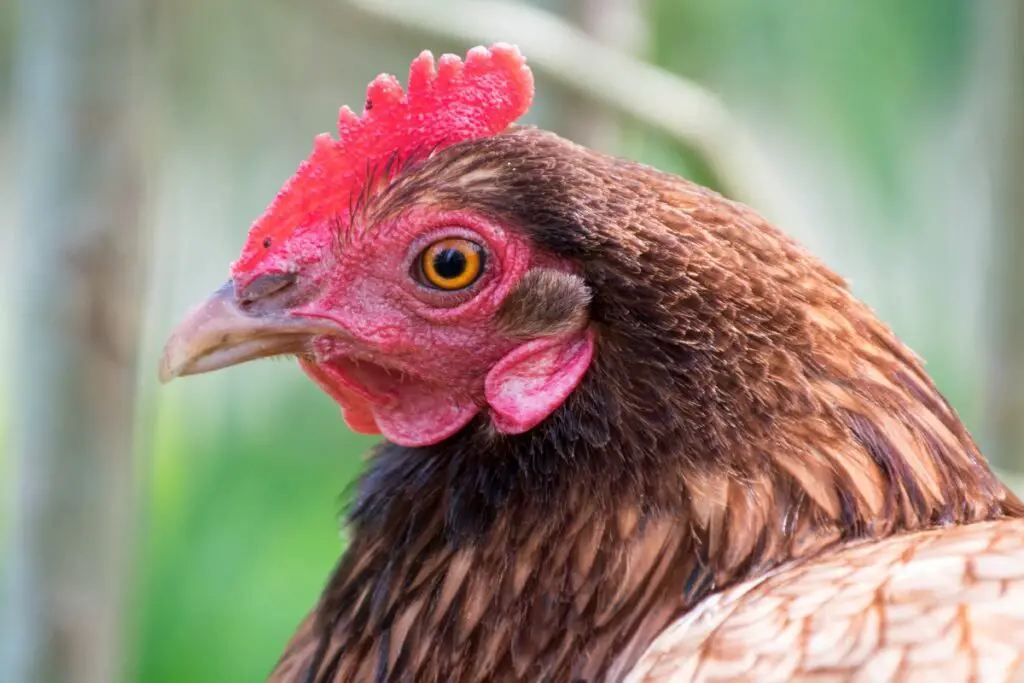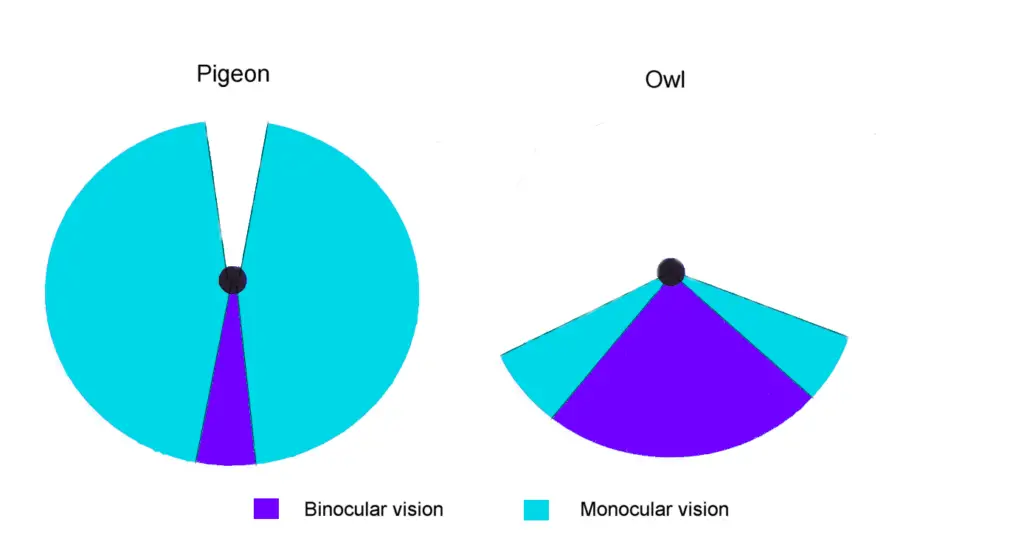How & Why do animals and birds with eyes on the side see?
- How do animals and birds with eyes on the side see?
- Why do animals and birds have eyes on the side of their head?
- What is it called when animals and birds have eyes on the side of their head?
- Monocular Vision vs. Binocular Vision: Let's understand the concept of how and why do animals and birds with eyes on the side see
How do animals and birds with eyes on the side see?
It is to be noted that not all of the birds and animals have eyes on the side of their head. In general, only the birds or animals that are often vulnerable to getting killed by their predators have adapted themselves to having eyes on the side of the head to see.
Animals and birds with eyes on the side of their head see due to their monocular vision technique. This enables them to see two different objects at the same time using their two different eyes.
Having eyes on the side gives them the ability to see at a much wider angle without moving their head a lot as compared to those organisms that have eyes in front.
They can focus on two different things at the same time. This type of adaptation has helped them to keep an eye on their predator while doing their other necessary things together, as they can see two things at the same time.
First of all, having two eyes gives them the ability to having a 3-dimensional vision. This can be seen in all organisms that have two eyes, let it be on the side, or in front.
Also, in the other case, having eyes on the side gives them the clear-cut ability to see at a wide-angle from the side, while the front view isn’t that much wider and precise.
But, the depth and clarity of the organisms with eyes on the side isn’t that much in-depth as compared to the vision of the those organisms having eyes in front.
Having eyes are on the head affects its field of vision and that’s how much it can see in front and to the side at any one time.
So, having eyes in front of the head let the organisms see more widely and clearly straight forward with much dept by focusing on only one object.
While having eyes on the side, let the organisms see more widely from the side and less clearly in front by letting the focus fall on two different objects at the same time.

Why do animals and birds have eyes on the side of their head?
Animals and birds have eyes on the side of their head because it is how they have adapted themselves to looking things happening in their surrounding at a much more wider angle.
This feature lets them focus on two objects at the same time. And so, is helpful for the prey organisms to keep an eye on their predator while viewing the other necessary things like searching for food, etc. all at the same time.
This feature also gives them the ability to view more things at a much wider angle (more than 250 degrees in general) without much turning of their head. This is a great adaptation for them.
So, in the wild, having the awesome ability to focus on two different objects at any particular moment, provides different kinds of vision by helping the different kinds of birds/animals survive in the wild.
So, in simple words, animals and birds have eyes on the side of the head because they are monocularly viewing organisms, as they can see forward and sideways at the same time at a wider angle.
For them, in-depth perception of the image they see is not a big factor and so the biggest advantage is that they don’t get any interference from the other eye when aiming at their viewing objects.
So, by using the eyes in this way i.e by having on the side, the field of view is eventually increased, while the depth perception gets limited. And, the fact is that depth perception doesn’t seem too significant in their daily vision.
What is it called when animals and birds have eyes on the side of their head?
When animals and birds have eyes on the side of their head, they are called monocularly viewing animals. They are often known to be the prey organisms that are vulnerable to be killed by the predators.
Most preys have monocular vision, and so the prey organisms are often known to have eyes on the side of their head.
So, monocular vision enables them (the prey) to respond more quickly upon visually sensing a threat, such as seeing a predator while viewing other pieces of stuff as well.
They are often termed as widely viewing organisms, because of their lack of depth perception, but due to having a wider range of vision.
For example, Zebras, Horses, Cattles, Pigeon, Peacock, Hen, Parrot, etc. are some of the animals and birds that have eyes on the side of their head and so they are known to have more monocular vision.
For instance the advantage is that, for birds like parrots and pigeons, having eyes gives them a wider plane of vision with only a small blind spot in their eyes.
This lets these birds see where they are going, while also keeping an eye out for predators which might be trying to sneak upon them.
Monocular Vision vs. Binocular Vision: Let’s understand the concept of how and why do animals and birds with eyes on the side see
Definition: Monocular Vision
Monocular Vision is the type of vision that is seen when the organism can focus on two different objects at the same time using its two different eyes.
These types of organisms have eyes on the side of their head. This gives them a wider angle of vision from each side of the head.
They can’t see in-depth and with much clarity but they are able to see more things at the same time without turning their head.
So, for monocularly viewing animals, they can see less widely what’s in front of their eyes and can see more widely what’s at the side of their eyes.
So, in simple words, Monocular vision means each eye is focused on a different object at any particular moment, and this is normal for parrots and pigeons and other prey animals.
And so, having different kinds of vision helps different kinds of birds survive in the wild.
Definition: Binocular Vision
Binocular Vision is the type of vision that is seen when the organism can focus on only one object at the same time using its two different eyes.
It’s impossible for them to see and focus on two different things at the same time.
These types of organisms have eyes on the front side of their head. This gives them a narrow angle of vision from each side of the head and wider angle of vision while viewing straight.
They can see in-depth and with much clarity but they are not able to see more than one thing at the same time without turning their head.
So, for binocularly viewing animals, they can see more widely what’s in front of their eyes and can see less widely what’s at the side of their eyes.
So, in simple words, Binocular vision means each eye is focused on the same object at any particular moment, and this is normal for humans, cats, owls, and other predatory animals.

Difference: Monocular Vision vs. Binocular Vision
| No. | Monocular Vision | Binocular Vision |
|---|---|---|
| 1. | Monocular Vision is seen more in animals with their eyes on the side of their head. | Binocular Vision is seen more in animals with their eyes in front of their head. |
| 2. | Organisms with more monocular vision have less binocular vision. | Organisms with more binocular vision have less monocular vision. |
| 3. | Seen in prey animals to defend themselves. | Seen in predatory animals to search for prey from far away. |
| 4. | Such a vision doesn’t have clarity and an in-depth perception of what the organisms are viewing. | Such a vision does have clarity and in-depth perception of what the organisms are viewing. |
| 5. | Monocular Vision allows viewing two different objects at the same time. | Binocular Vision allows viewing only one single object at the same time, |
| 6. | Less turning of head is seen in more monocular vision having organisms. | More turning of head is seen in more binocular vision having organisms. |
| 7. | The organisms can see widely with each perception with a monocular vision. | The organisms can’t see widely with each perception with a binocular vision. |
| 8. | Examples: Peacocks, Pigeons, Parrot, Hen, Cow, Horse, etc. | Examples: Owl, Eagle, Lion, Humans, etc. |
